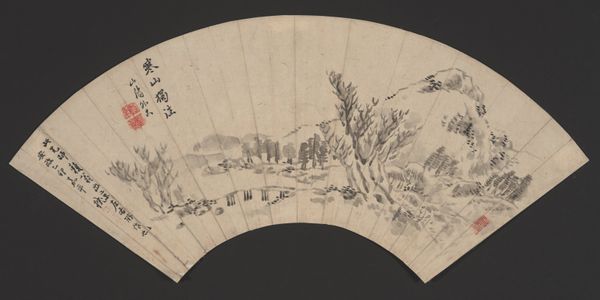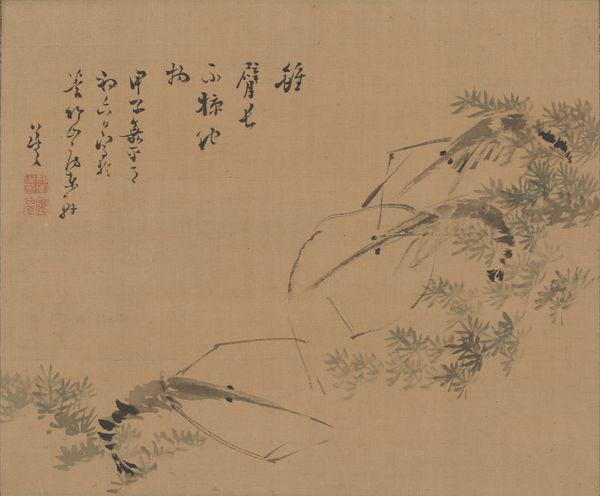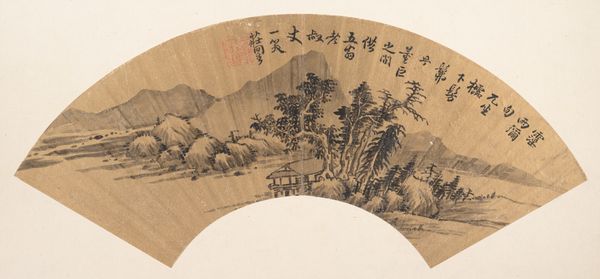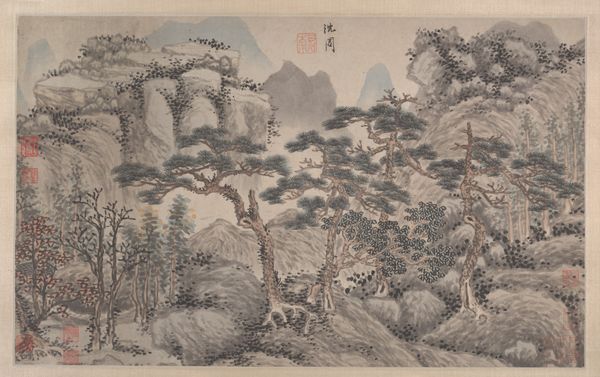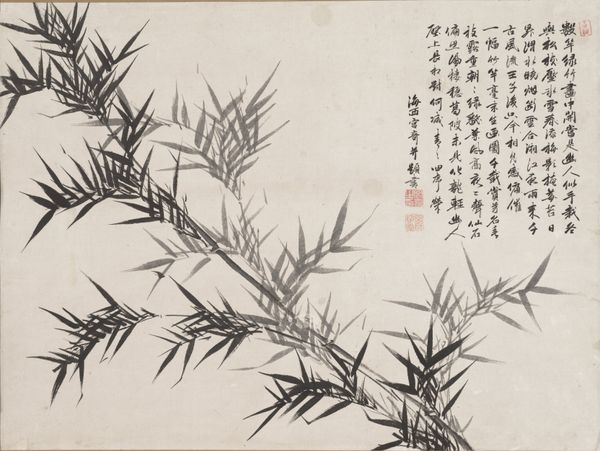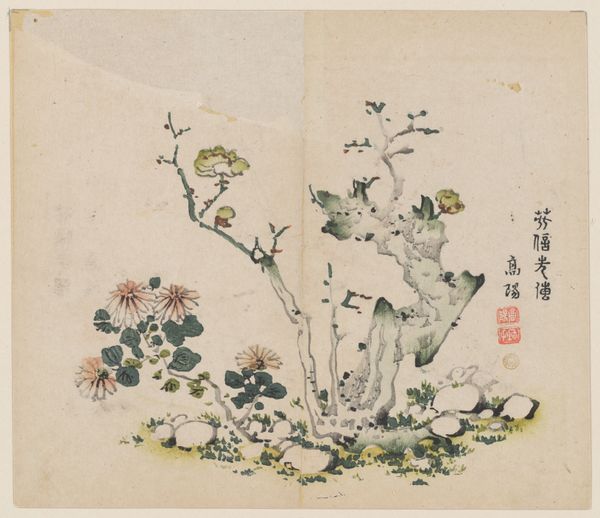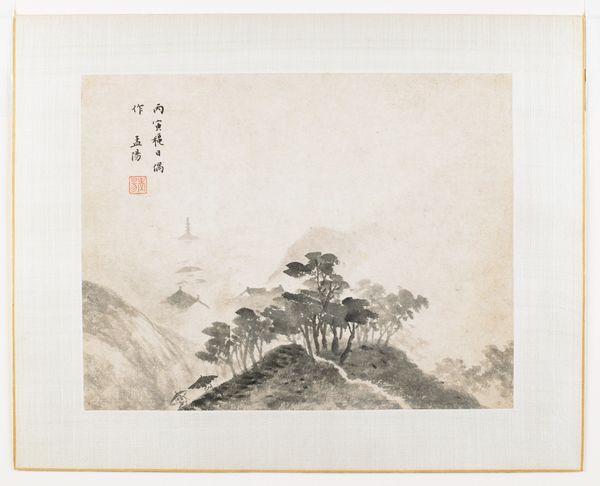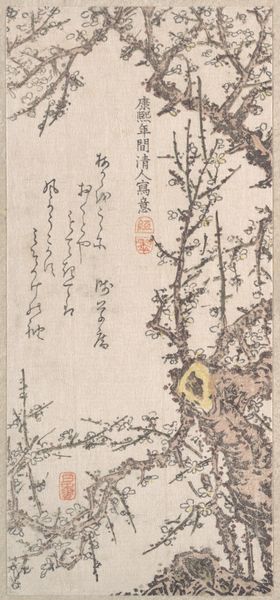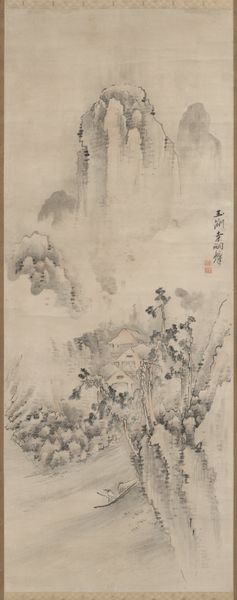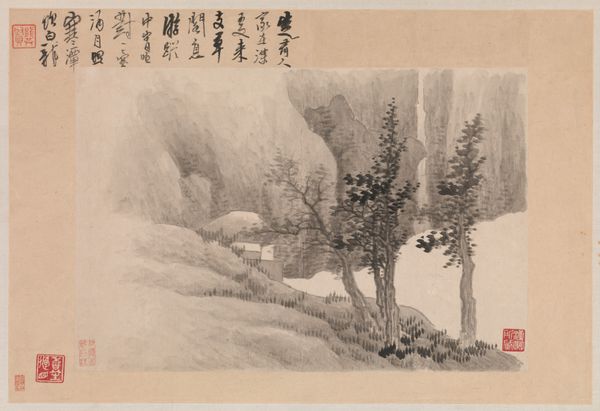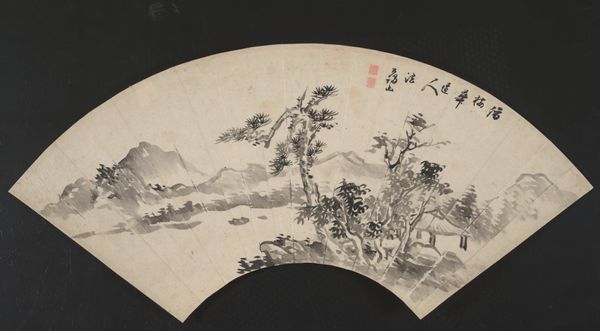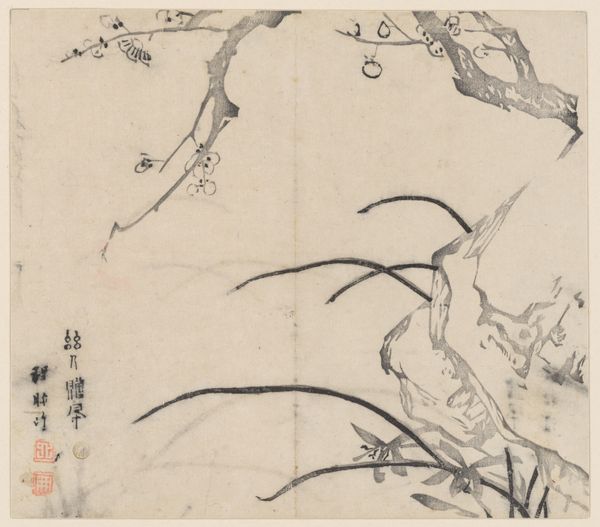
drawing, paper, ink
#
drawing
#
narrative-art
#
asian-art
#
landscape
#
paper
#
form
#
ink
#
line
#
watercolor
Dimensions: 7 11/16 × 17 1/2 in. (19.53 × 44.45 cm) (sheet, fan)12 × 21 15/16 in. (30.48 × 55.72 cm) (mount)
Copyright: Public Domain
Editor: This is Ninchōji Baikoku's "Amid the Mountains," an ink and watercolor drawing on paper, dating back to the 19th century. I’m immediately struck by the contrast between the detailed foreground and the hazy mountains in the distance, it creates a very interesting perspective. How do you interpret this work within its historical and cultural context? Curator: Well, we need to look beyond just the aesthetic appeal. Think about the socio-political role landscape paintings played during that era in Japan. How might this image, created in the context of the 19th century, reflect or perhaps challenge prevailing views about nature and society? Editor: So, you're suggesting the painting might be more than just a pretty picture? I hadn't thought about it challenging anything. Curator: Exactly! Landscape art at the time wasn't merely decorative. It often reflected philosophical ideas about harmony and order. Consider the brushstrokes: do they suggest a carefully cultivated space or something more wild and untamed? That choice reflects the role the artist seeks to perform. Is he glorifying cultivated lands owned by the powerful elite or critiquing those values and hierarchies? The placement of the buildings as well: notice how they are not large estates, they look modest. Editor: The brushstrokes do seem to flow easily. You know, viewing the humble structures within this vast setting could imply an inclination towards valuing nature over societal advancement. Curator: Precisely! It’s that subtle interplay between form and content, the socio-cultural messaging of the image that is crucial to understand art's public role. Also consider what this scene might have looked like to the original viewers and collectors; the places to see and be seen; what we collect signals social value. Does that reframe anything about your reading? Editor: Absolutely, seeing the work's social and cultural relevance opens a broader perspective for me. Curator: Indeed, art exists in, and comments on, our shared realities. Editor: I will always remember the public and political voice of imagery from now on. Curator: Fantastic. Let’s look at the next piece.
Comments
No comments
Be the first to comment and join the conversation on the ultimate creative platform.
